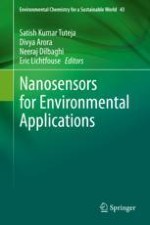2020 | OriginalPaper | Buchkapitel
6. Point-of-Care Sensors for On-Site Detection of Pesticides
verfasst von : Neeti Kalyani, Surbhi Goel, Swati Jaiswal
Erschienen in: Nanosensors for Environmental Applications
Aktivieren Sie unsere intelligente Suche, um passende Fachinhalte oder Patente zu finden.
Wählen Sie Textabschnitte aus um mit Künstlicher Intelligenz passenden Patente zu finden. powered by
Markieren Sie Textabschnitte, um KI-gestützt weitere passende Inhalte zu finden. powered by
